Low Net
The best courses for bad golfers
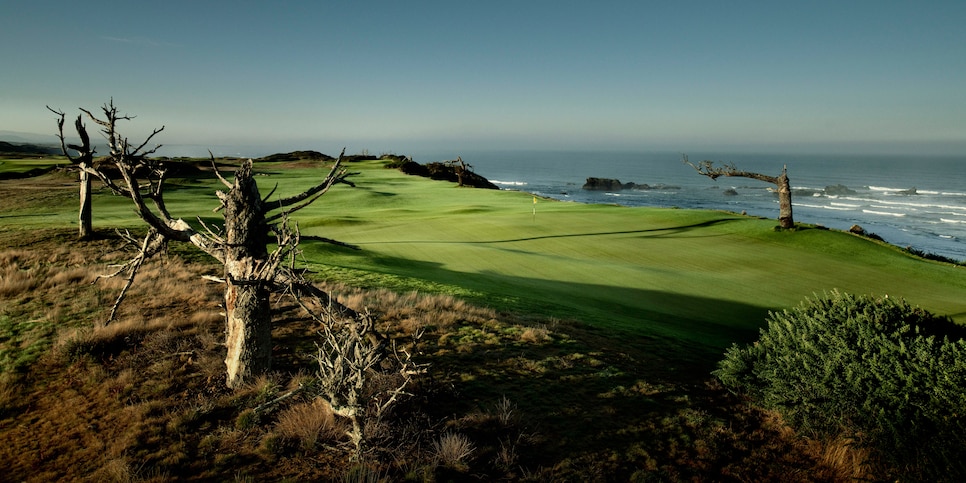
Dom Furore
I am a mid-handicap golfer, but closer to scratch at obsessing over inane golf topics. Be grateful you’re not in my foursome.
The latest such topic was about golf courses. Golf Digest has a rigorous evaluation process for our franchise rankings, and I’ve been fortunate to play a bunch of courses ranked near the top. All of those experiences were rewarding, but they also reinforced that some courses are more enjoyable for certain players who aren't quite —what's the word I'm looking for here—good. This requires some explanation.
What is a bad golfer?
Well, for starters, a “bad golfer” is how I would describe myself. As an 11 handicap, I am not altogether terrible, and can occasionally piece together a decent score, but certain courses target my weaknesses to such a debilitating extent, my perspective on the experience is invariably warped as a result. While all golfers are varying degrees of mediocre, for the purposes of this exercise, anything above a single-digit handicap makes you officially "bad." I’m sorry to be the one to break it to you, but welcome. I’ll add you to the group chat.
Do bad golfers always prefer easy courses?
No! Maybe you’re more likely to enjoy a course where you score reasonably well, but I believe it’s where a course inflicts its harshest punishment that matters more. For instance, no one would dare describe Augusta National as an easy course for mid-handicappers. A slope of 148, which gauges a course’s difficulty for bogey golfers, confirms as much. But those who have played it say Augusta is still generous off the tee and allows even erratic ball-strikers reasonable approaches into greens. That those same players often make a mess on the treacherous greens detracts from their score, but not from their ability to appreciate the course.
What do bad golfers need?
Well, I shouldn’t speak for all of us. We are a diverse constituency of reverse pivoters, early extenders and delusional risk managers—and this is all before we get to the green. But speaking broadly, let’s agree bad golfers are more likely to spray the ball off the tee, often lack the pop to carry the ball significant distances, and usually struggle to hit approaches high and land them soft. Hence, I am proposing my main criteria for a good course for a bad golfer as: sufficient width off the tee, a limited number or absence of forced carries, and an ability to run the ball up to most greens.
Other than that, do bad golfers appreciate good courses?
Look, bad golfers want the same things out of life as the rest of society, other than a few more training aids ordered off Golf Channel at 2 a.m. But to answer your question, a great golf course to us is still a great golf course for everyone else. We just want to play it and not spend the entire time searching through adjacent neighborhoods looking for our balls.
With that in mind, a few colleagues and I have constructed our list of the best courses for bad players.

Why it's good for bad: How this hallowed layout that has soaked so many elite golfer dreams could be suitable for your typical hit-and-hoper underscores the unique nature of our list. Augusta National is hardly easy, and it might well require extra boxes on the card just to tabulate your score. But from the members tees the corridors allow enough breathing room to set up a reasonable approach. What happens from there, well, good luck. But at that point you might not even care.—S.W.
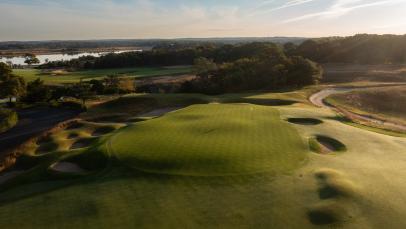
Why it's good for bad: It’s rare—extremely rare—that a golf course combines historical significance, interesting architecture, a picturesque setting, and delightful playability. Even many of the best courses will only hand you three of those four, but National give you all of it. Its fairways are wide, its par 5s scoreable, and its par 3s short. Many great courses will command your respect. But National is a great course that can show every golfer a good time.—Luke Kerr-Dineen
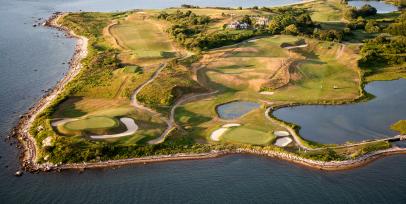
Why it's good for bad: When the wind is down, as is often the case, an average length hitter will pull nothing but wedges and short irons on Fishers’ par 4s. Crustier, natural turf conditions are part of the island charm, and generally keep green speeds tame so that bad golfers can easily recover their doubles and bogeys when they get out of position. — Max Adler
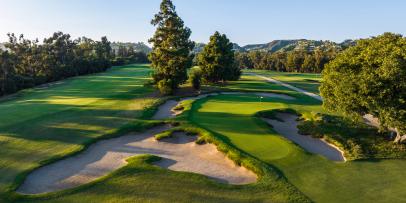
Why it's good for bad: LACC has big fairways and next-to-nothing rough that stays brown, thin and dormant much of the year. In California’s 12-month golf season, the comparatively thick June US Open conditions are the exception, not the rule. Plus, a cupcake par 5 opening hole gets almost every golfer off in a positive frame of mind.—M.A.
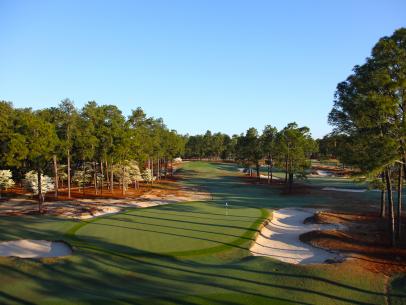
Why it's good for bad: Pinehurst No. 2 achieves a rare architectural feat: it resists birdies from elite players because of the exacting hole locations on the crowned greens, but high handicappers can get around making fives, sixes and sevens without much sweat. You can’t actually play the course with your putter, but once in the fairway players can use nothing but the blade to hole out if desired, and putting everything from inside 20 yards is a good way for bad golfers to shoot a respectable score on a legitimate U.S. Open course.— Derek Duncan
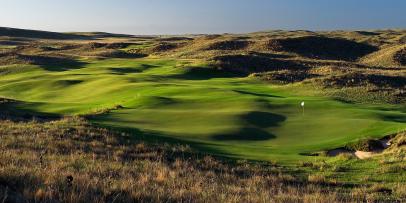
Why it's good for bad: The only thing better for bad golfers than a 50-yard-wide fairway is an 80-yard-wide fairway, which is the target range of most holes at Ballyneal. That’s why golfers of all skill levels find the course so enjoyable, even in the wind—it’s easy on the big miss. Some of those saved strokes will be surrendered back on the big roly-poly greens that can terrorize lag-challenged putters, but on any given day enough pins will be placed in hollows and low spots that even poorly struck shots will collect close to the hole, leaving far more smiles than frowns.—D.D.
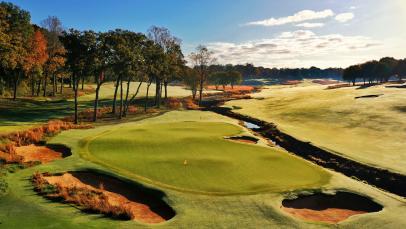
Why it's good for bad: Bad golfers shouldn’t be exempt from having to think their way around a course. At Old Town Club, a vintage Perry Maxwell design near Wake Forest in North Carolina, the fun is figuring out how to tack to the high points of the ample but side-sloping fairways to get drives into safe positions and away from the (light) rough. It also helps to locate the low points of the sloping, rippling greens to leave uphill putts. Marginal players likely won’t score well here if they bring their normal game, but a little intelligent course management at a highly strategic course like Old Town will improve their prospects.—D.D.

Why it's good for bad: It doesn’t get more fun than MPCC. You are floating on the fairways of golf heaven after the fifth tee until the 17th. The Shore course’s massive fairways and open playing corridors maximizes the enjoyment of one of golf’s best walks. Invigorating shots to compelling but open green complexes will make every golfer think. It’s the kind of place that can test the best players in the world—while also being a course you could play every day. —Stephen Hennessey
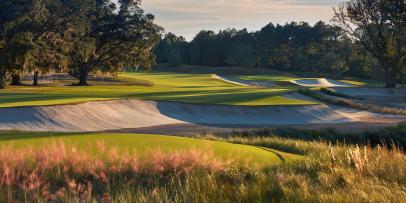
Why it's good for bad: You wouldn’t expect to find an Australian Sandbelt-inspired design in Jasper County, S.C., but this Tom Fazio design has a different flair. Finely edged bunkers cut right into fairways and greens, but there’s often a route to avoid the trouble. Massive 6,000-plus square foot greens are also reassuring sights when you find yourself in one of the many waste areas. The ground game is rewarded off this firm and fast turf—some of the best anywhere. —S.H.
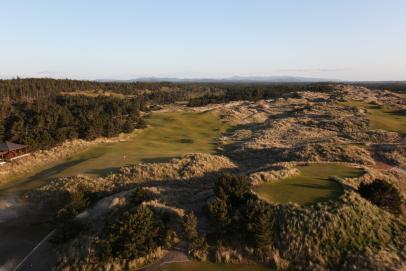
Why it's good for bad: A bonus feature of a playable golf course is a course that has the façade of severity. Bandon Trails is plenty challenging, but it’s also not as penal as its evergreen framing and multiple waste areas might suggest. The sheer scale of this Coore-Crenshaw modern classic creates the dynamic where what often feels like a wildly off center hit often still ends up in the fairway.—S.W

Why it's good for bad: A career-low round always lurks at Mammoth Dunes. It’s not that the David McLay Kidd layout is a pushover: There are heroic carries and precision required into intriguing green designs. But the way the land moves, you’ll have drives bound down rolling terrain for an extra 40 or 50 yards on some of the widest fairways in golf. There’s rarely a reason not to swing driver as hard as you can, which is plain fun. —S.H.
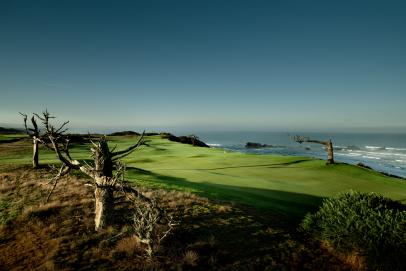
Why it's good for bad: That old Scottish maxim “nae wind, nae golf” also applies to this unique piece of property on the edges of the Bandon Dunes resort. On a clear, relatively calm day, the Sheep Ranch is a forgiving landscape, with generous slopes that occasionally deflects balls away from trouble. It's worth noting, however, that this is still a course exposed on the edges of the Pacific. So if it really blows . . . never mind.—S.W.
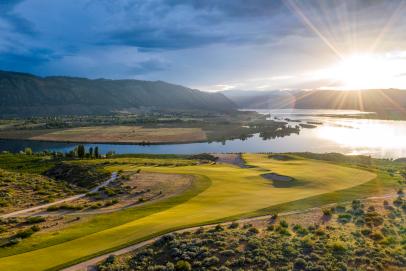
Why it's good for bad: A great course for bad golfers allows shots rocketed along the ground, intentional or not, and still find their goal. Gamble Sands’ wide, glassy surfaces play like an ice rink and the greens are set at fairway grade to welcome a rolling ball from any distance. The green contours are too docile for some critics, especially compared to the drama built into the risk-reward drives and surrounding high country scenery of central Washington State, but the kinds of player we’re discussing here never complain. This is where architect David McLay Kidd had his “come to Jesus-the-18-handicapper” moment and developed the more gracious “hard birdie, easy par” approach he later carried to Mammoth Dunes.—D.D.




